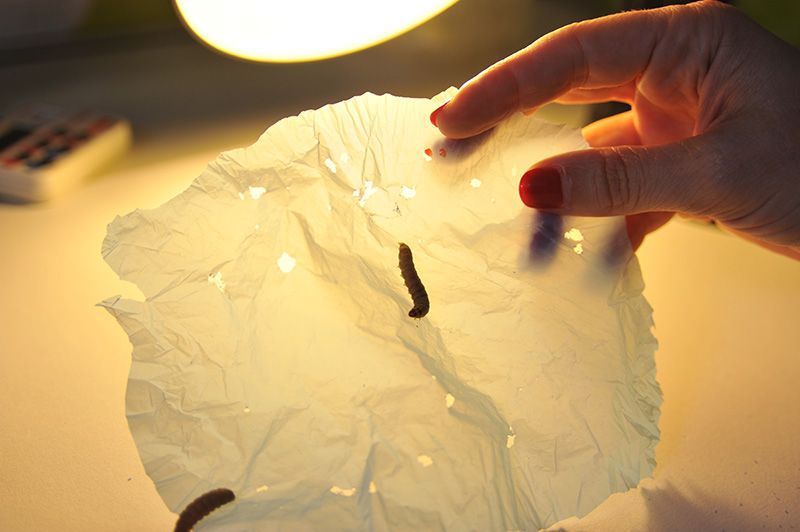Plastic-eating Worms

Federica Bertocchini
an IBBTEC researcher has discovered how to biodegrade polyethylene it turns out that wax moth larvae that habitually feed on honey and wax from bees are able to degrade plastic isn't it great news for the enviroment?
This worm is capable of biodegrading polyethylene, one of the most resistant plastic materials that exist, with which are made shopping bags and food packaging, among other objects. The discovery has been patented by researchers. The CSIC researcher has worked on this with Paolo Bombelli and Chris Howe of the University of Cambridge, the paper will be published in the upcoming number of "Current Biology" magazine.
Every year around 80 million tons of polyethylene, a material difficult to degrade and very resistant, are produced around the world. Plastic bags, for example, made of low-density polyethylene, take about 100 years to fully decompose; The most dense and resistant can take up to 400 years to degrade. On average, each person uses more than 230 plastic bags annually, which generates more than 100.000 tons of this type of waste.
At present, the processes of chemical degradation are very long and can last several months, in addition to that it is necessary to use corrosive liquids such as nitric acid, it is the first time that a research team finds something in nature capable of degrading this material.
Plastic is a global problem
Today residues can be found everywhere; Including rivers and oceans. Polyethylene, in particular, is very resistant, so it is very difficult to degrade naturally, "said the CSIC researcher, who works at the Institute of Biomedicine and Biotechnology in Cantabria, located in Santander.
We have done many experiments to test the efficacy of these worms by biodegrading the polyethylene 100 worms are able to biodegrade 92 milligrams of polyethylene in 12 hours, it's really fast says Bertocchini. After leaving the larva phase, the worm is wrapped in a whitish cocoon or chrysalis. Researchers have further discovered that the contact of the cocoon with polyethylene is sufficient for this plastic to biodegrade.
The composition of the wax is similar to polyethylene.
According to the study's researchers, this may be the reason why the worm has developed a mechanism to get rid of this plastic. "We still do not know the details of how biodegration occurs, but there is a possibility that an enzyme will do it. The next step is to detect, isolate, and produce it in vitro on an industrial scale. This way we can begin to eliminate this resistant material effectively.
A Casual Discovery
The researcher, amateur beekeeper, discovered this quality of wax worms by chance. Finding the honeycombs stored in his house full of worms, which had begun to feed on the remains of honey and wax from their bees, "I decided to remove the worms and leave them in a plastic bag while cleaning the combs. After everything was ready, I went back to the room where the worms were and I saw that they were everywhere, that they had escaped from the bag despite being closed. So I checked that the bag was full of holes. There was only one explanation: the worms had made holes and had escaped there.
Hi! I am a robot. I just upvoted you! I found similar content that readers might be interested in:
https://www.dadant.com/wax-worms-rescue/
Downvoting a post can decrease pending rewards and make it less visible. Common reasons:
Submit